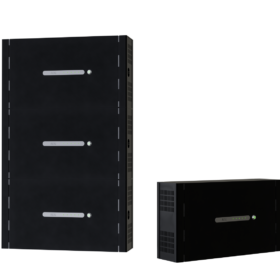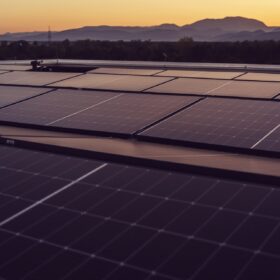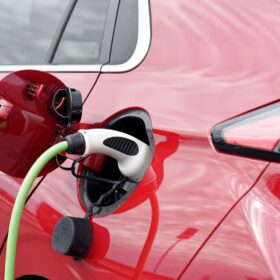Growatt sees growth in Europe’s C&I solar, storage markets
At The Smarter E Europe event – recently held in Munich, Germany – Growatt shared insights on the European market. It reports a slowdown in the residential segment in Central Europe due to lower demand, but Growatt VP Lisa Zhang said she expects more growth in the commercial and industrial (C&I) solar and storage sectors.
AEG unveils 5 KWh stackable high-voltage battery
Germany’s AEG is selling new stackable, high-voltage batteries with usable capacity of 5 kWh. They come with a 10-year warranty and reportedly have a lifecycle of more than 4,500 cycles.
The Hydrogen Stream: Poland unveils hydrogen strategy
The Polish government has outlined its main objectives for the development of hydrogen, while Tyczka Hydrogen says a damaged compressor from Maximator Hydrogen caused a recent incident at one of its filling stations in Germany.
Energy-storing carbon fibre composites pave the way to weightless batteries
Building on research work at Sweden’s Chalmers University of Technology, Sinonus has developed carbon fiber-based structural batteries that not only store energy but also become an integral part of a product’s structure. Their possible span of energy density is said to be around 25-50% of a conventional lithium-ion battery at current technology level.
Grenergy secures financing for two phases of world’s biggest battery project
Madrid-headquartered independent power producer (IPP) Grenergy has reached financial close on the first two phases of its Oasis de Atacama solar and battery energy storage hybrid project in Chile.
Deye releases residential hybrid inverter
Chinese manufacturer Deye says its new three-phase residential hybrid inverter system has a rated output power ranging from 14 kW to 20 kW.
Somalia opens tender for off-grid solar-plus-storage plants
Somalia’s Ministry of Energy and Water Resources has launched a tender for off-grid solar-plus-storage power plants to serve 46 education facilities in the southeast of the country. The deadline for bids is August 1.
Enfinity Global secures $162.4 million for 250 MW solar portfolio in Japan
Enfinity Global has closed $162.4 million in financing for a 250 MW solar portfolio in Japan. The seven utility-scale projects are expected to produce 300 GWh of clean energy per year.
V2G tech can provide outage support, claim Australian researchers
Researchers at the Australian National University (ANU), Canberra, have shown that their response to a February 2024 grid emergency provides evidence that electric vehicles (EVs) equipped with vehicle-to-grid (V2G) systems could strengthen the grid during blackouts, marking a global first for such research.
Residential PV power forecasting method based uniquely on direct radiation
Researchers in Spain have created a novel PV forecasting method that uses only direct radiation as a parameter. They found it to be “comparable, if not superior” to four established forecasting techniques. The method could help homeowners with PV systems decide when to use electricity-intensive appliances and cleaning systems.










